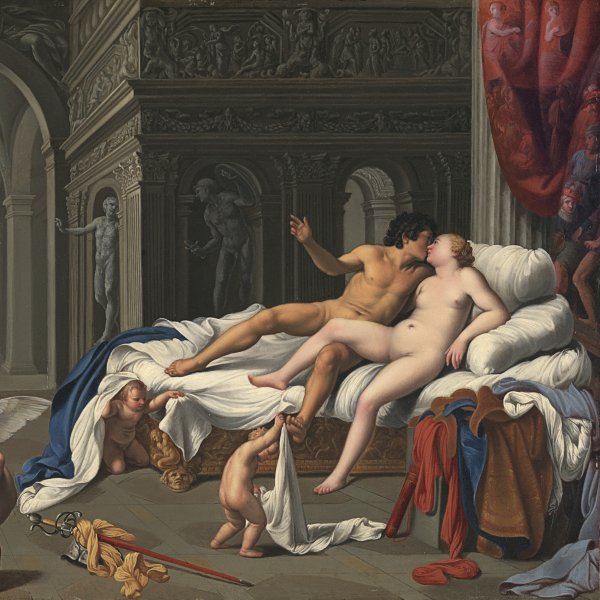Carlo Saraceni
The artist's date of birth, 1579, can be deduced from his own documented statement of 1616 in which he stated that he was thirty-seven. Saraceni reached Rome at the turn of the century (around 1598) where, according to his biographer Baglione, he became the pupil of the sculptor Camillo Mariani from Vicenza. Presumably, the young Venetian's interests were divided among the international yet still Mannerist style of the Cavaliere d'Arpino, the elegant Raphaelesque classicism of Emilian painters such as Albani, and the modern and atmospheric landscape painting of Elsheimer. All this was prior to the development of Saraceni's celebrated interest in Caravaggio. Even though some trace of naturalism appears in the painter's earliest dated work, such as The Rest on the Flight into Egypt in the Camaldolese Hermitage in Frascati of 1606, it was only well over a decade later, at the very end of his career, that Carlo Veneziano-as his biographer Giulio Mancini calls him (although he rightly describes him as only partially Caravaggesque)-produced his most convincing realist works (The Martyrdom of Saint Lambert, Saint Bennone Recovering the Keys to the City of Meissen, Rome, Santa Maria dell'Anima, 1617-1619). International Mannerist refinements, almost the work of an alter ego to Albani (perhaps Saraceni was indeed the predecessor to his Emilian colleague), are characteristic of the works attributed to his early years, usually produced in a smaller format (such as the Arpino-inspired Andromeda, Dijon, Musée des Beaux-Arts, the Bathing Venus and Mars, formerly in Minneapolis, the Clark Collection, and the Venus and Mars, Madrid, Carmen Thyssen-Bornemisza Collection). The six small works on copper in the Capodimonte Museum, Naples, with episodes derived from Ovid's Metamorphoses, whose attractive landscapes indicate the influence of Elsheimer, predate 1608. Alongside paintings still tied to the Venetian 16th-century tradition (The Finding of Moses, Florence, Fondazione Longhi, The Banquet of the Wealthy Epolonius, Rome, Pinacoteca Capitolina), there emerge, in the 1620s, paintings already indebted to the Caravaggesque aesthetic, including The Martyrdom of Saint Cecilia (London, private collection) and the three canvases sent to the Cathedral of Toledo (1613-1614) noteworthy for their experiments with artificial lighting. This Caravaggesque aspect recurs in Saraceni's better-known Roman works such as the fine and much imitated canvas of the Death of the Virgin for Santa Maria della Scala, painted to substitute the rejected one by Caravaggio, as well as in some of the mural paintings for the Ferrari chapel in Santa Maria in Aquiro including Scenes from the Life of the Virgin. The dates of this last work are uncertain but they must have been produced between 1612 and 1617, the year in which the chapel is dedicated, and it suggests the intervention of his assistants. Three excellent Veronese naturalist painters, Bassetti, Ottino and Turchi, assisted Saraceni in painting the decorative "oriental" frescoes in the Sala Regia of the Palazzo del Quirinale in Rome (1616-1617) without, however, any sign of the influence of Caravaggio. Such influence, however, characterises at least in part The Sermon of Saint Raymond (before 1614), once in Sant'Adriano in Rome, (now in the church of the Casa Generalizia dei Mercedari) which suggests the example of Dutch naturalism, his Saint Charles Borromeo Giving Communion to a Plague Victim at Night for the Servite Church in Cesena (1618-1619), and his ironic Saint Charles and the Procession of the Holy Nail in San Lorenzo in Lucina in Rome (1619). In 1619 Saraceni returned to Venice where he had been commissioned to executed a large canvas or telero for the Palazzo Ducale (depicting Doge Enrico Dandolo Calling for a Crusade). The artist, however, died the following year and was barely able to start the painting which was subsequently completed (or perhaps executed entirely based on his design) by his pupil from Lorraine, Jean Le Clerc (a mere imitator of his style apart from a lack of Caravaggesque influence), who signed and dated it 1621.
Roberto Contini




